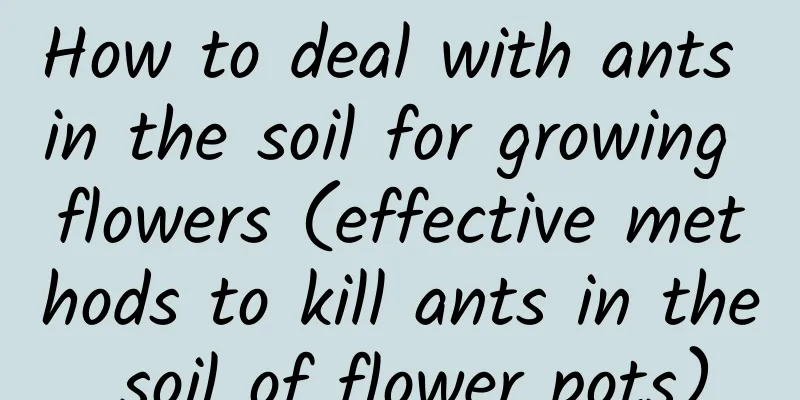Why is the Kalanchoe losing its leaves?

Too much watering will cause root rotProblem AnalysisKalanchoe is cold-resistant and moisture-averse. As a succulent plant, it stores a large amount of water in its body. If you water too much when there is sufficient light, the roots will easily rot. WorkaroundNormally, Kalanchoe only needs to be watered once every 7 to 10 days, but now the temperature is so low that it won’t hurt if you don’t water it for ten days or half a month. Check the Kalanchoe at home. If the soil is too wet, don’t water it for the time being. Turn over the surface soil to allow the moisture to evaporate as quickly as possible. If there is no improvement after a week, you need to remove the plant from the pot and check the root system. If the roots are severely rotten, cut them off and replant. The soil in the pot is too dry and lacks waterProblem AnalysisKalanchoe generally will not die of drought. In some cases, if you water it too little, it can cause serious leaf loss. For example, if you are extremely lazy and have not watered the plants throughout the fall and winter, it may be ok for half a month or a month, but... reflect on yourself! WorkaroundBefore all the leaves fall off, gradually add water, watering a little at a time, don't water too hard, slowly moisturize the root system and let the roots drink enough water. Whitening of leaves, powdery mildewProblem AnalysisA layer of white mist or spot-like objects appears on the leaves of Kalanchoe. When placed on an open balcony or outside the window for maintenance, the dust and white spots on the leaves are ignored by many flower lovers, causing the Kalanchoe to drop leaves, wilt, or even die. WorkaroundSpray the leaves with baking soda mixed with water. Reference dosage: Pinch a small handful between three fingers and add 200ml of water. Spray once every 2 to 3 days. If the white substance is light, one spray will remove it. If it is serious, spray more times. Insufficient lightProblem AnalysisIn daily maintenance, if there is insufficient light or the environment is too dark, not only will the branches be weak, but there will also be large areas of leaf fall. WorkaroundIn sunny weather, adjust the position of the Kalanchoe to allow it to receive more sunlight. More sunlight is also good for flowering! Long wormProblem AnalysisIf the Kalanchoe is infested with insects, its leaves will fall off. Check carefully, there will be small gaps on the leaf surface and back caused by insects, or check if there are small white and green insects. The most common ones are leaf cutters and aphids. Clean them up immediately after discovery. WorkaroundWhen you find insects on the leaves, cut them off immediately and then spray pesticides to prevent future problems. If the infestation is serious, you can spray some Flower Protector. In general, you can use homemade insecticides: soapy water, citrus peel liquid, baking soda liquid. |
<<: Be careful, if you keep your money tree like this, it will freeze to death sooner or later
>>: Why doesn't the calla lily bloom?
Recommend
How to save seeds of single garlic
Introduction of single garlic seeds Single-headed...
How to grow orange trees to make them more vigorous?
Oranges are a fruit that many people like to eat....
What soil is suitable for cotton planting?
Cotton Introduction Cotton has strong adaptabilit...
How to grow succulents more vigorously in summer?
June and July every year mark the hottest period ...
What to do if the leaves turn yellow in summer
1. Increase humidity Reason: The outdoor sunlight...
The difference between forget-me-not and lavender, four differences to quickly distinguish them!
1. Color The main color of forget-me-not flowers ...
How to take care of the Rhododendron after the flowers fade
Cut off the branches after the Rhododendron flowe...
Cultivation methods and precautions of small crown flowers
1. Matrix selection The small crown flower is not...
What are the green non-flowering plants?
1. Monstera The plant is relatively large and blo...
Which month is best for sowing peas?
Not only the seeds of peas are edible, but the yo...
How much does it cost to build a vegetable shed per acre (how much does it cost to build a vegetable shed per acre)
Today's steel frame vegetable greenhouses use...
How to save seeds of Qingming vegetables and how to collect seeds
Qingming vegetable seeds After the seeds of Qingm...
How many days does it take for green onions to sprout?
How long does it take for onions to sprout? Scall...
How to propagate daisies
The grafting method of daisy has high technical r...
What are the cultivation methods and precautions for grafted Christmas cactus
Introduction to Christmas cactus Christmas cactus...









